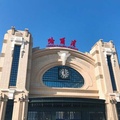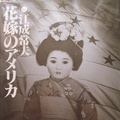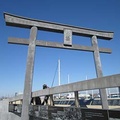
Keiko Fukuda
@fukudaKeiko Fukuda: Oriunda de la prefectura de Oita, egresada de la Universidad Internacional Cristina. Trabajó para una editorial de revista informativa en Tokio. En 1992 viajó a los Estados Unidos y trabajó como jefe de edición en una revista dedicada a la comunidad japonesa durante 11 años. Es freelance desde 2003 y actualmente escribe artículos para revistas focalizándose en entrevistas a personalidades. Publicó junto a otros escritores “Nihon ni Umarete” (nacido en Japón), Editorial Hankyu Communications. Sitio web: https://angeleno.net
Última actualización Julio de 2020
Historias de Este Autor
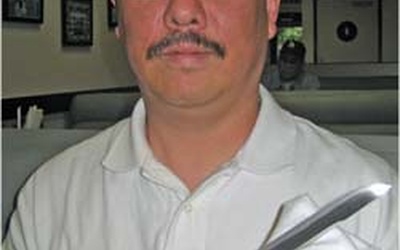
Sansei Japanese Sword Appraiser Mike Yamasaki – Part 1: Turning a Manzanar Dagger Into a Family Heirloom
22 de mayo de 2009 • Keiko Fukuda
I met with Mike one day around 10:00 am at a Japanese café in Little Tokyo. He had an appointment with a client in the morning and more meetings again that afternoon. His job? Appraiser of Japanese swords. Mike is a sansei (third-generation Japanese) and is married to Mayumi, who was born in Japan. While I was exchanging email with Mayumi about “Toyo’s Camera”, a documentary about internment camp experiences, she wrote that “my husband has a dagger made at …
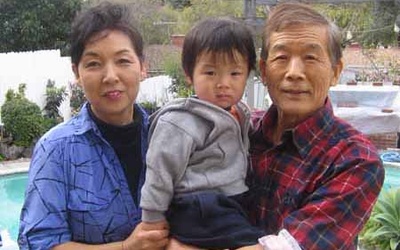
The Story of a New Issei Who Flourished Inside the American Culinary Scene: Ryo Sato, living in South Pasadena, CA – Part 3 Helping bridge his Japanese hometown and America
3 de abril de 2009 • Keiko Fukuda
>> Part 2Having compiled a brilliant list of achievements as a French chef that would make anyone envious, the next goal for Mr. Sato was to have his own restaurant. “In the old days, most people didn’t open their own place once they became head chef at a good hotel or restaurant. But I had confidence in myself. When I decided to resign, everyone wondered why I would leave such a great place. But it was definitely my dream to …
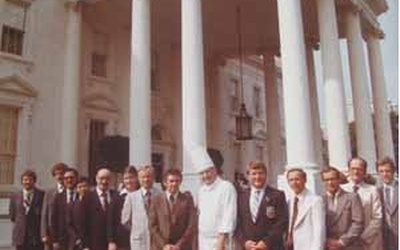
The Story of a Shin-Issei Who Flourished Inside the American Culinary Scene: Ryo Sato, living in South Pasadena, CA - Part 2 The first Japanese to be named head chef at a premiere LA restaurant
26 de marzo de 2009 • Keiko Fukuda
>> Part 1Mr. Sato, a chef who went to Switzerland on an overseas program after the Tokyo Olympics, spent time in France and England before heading to America in 1971 to work at The Plaza Hotel in New York. After coming to the realization that “unlike Europe, American cooking was very loose and inexact”, he was invited to Chicago and headed there. After a stint at Maxim’s Restaurant in Chicago, Mr. Sato moved to a restaurant called “95th”, starting work …
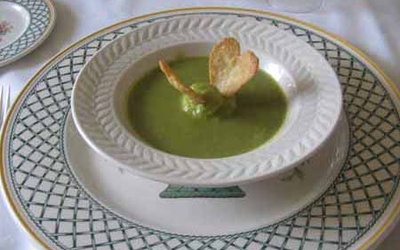
The Story of a Shin-Issei Who Flourished Inside the American Culinary Scene: Ryo Sato, living in South Pasadena, CA – Part 1 Setting off to study cooking, inspired by the Tokyo Olympics
19 de marzo de 2009 • Keiko Fukuda
Until 2004, French cuisine chef, Ryo Sato, managed a restaurant named Chez Sato in Arcadia, outside of Los Angeles. Although well beyond the metropolitan area, it was an extremely popular French restaurant, with people more than willing to make the journey. Since moving in 2004 and shutting down the restaurant, he’s been active in volunteer work that is bringing together his Japanese hometown and his American home. At his home in South Pasadena, he looked back on his life up …
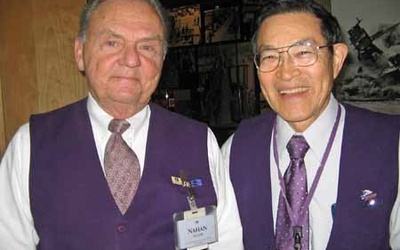
The History of Japanese Americans from the Perspective of a German-American: Mr. Nahan Gluck, docent for the Japanese American National Museum – Part 3 “It All Starts With Knowing”
4 de marzo de 2009 • Keiko Fukuda
>> Part 2Meeting Mr. Nahan Gluck, a volunteer docent at the Japanese American National Museum in Little Tokyo for the past 14 years, felt like touching someone who “loyally acts on what he believes in”. However, being so profoundly involved with the history of Japanese Americans, I wondered what he thought about his own roots and asked him about it. Nahan was born in New York in 1932. His father is German-American, born in New York, and his mother was …

The Japanese American Internment Experience As Depicted By A Japanese Director: A Movie Called “Toyo’s Camera”
28 de febrero de 2009 • Keiko Fukuda
On January 29, at the Japan Foundation in downtown Los Angeles, a screening for a documentary called “Toyo’s Camera” took place. This movie was produced and directed by Junichi Suzuki who made his name in Japan and moved to America after getting his green card. For director Suzuki who had immigrated to the United States 7 years ago, hearing Japanese Americans talk about their internment experience is something he had no chance of getting to know in Japan. In actuality, …

The History of Japanese Americans from the Perspective of a German-American: Mr. Nahan Gluck, docent for the Japanese American National Museum – Part 2 “Teaching Students And Going to Internment Camp Sites”
25 de febrero de 2009 • Keiko Fukuda
>> Part 1 After retiring from a Los Angeles County job in 1992 and seeing actual barracks from the Heart Mountain Internment Camp, Mr. Nahan Gluck started volunteering at the Japanese American National Museum in 1994. He is not of Japanese descent. However, filled with indignation that as a fellow American and as a fellow human being, ‘even one more person should know about the Japanese American history’, Nahan has been coming to the museum for more than twice a …

The History of Japanese Americans from the Perspective of a German American: Mr. Nahan Gluck, docent for the Japanese American National Museum - Part 1 “Why am I different if I am an American as well?”
20 de febrero de 2009 • Keiko Fukuda
I am a Shin Issei—born in Japan, a first generation Japanese American. It has been 17 years since I came to the United States. During that time, I have interviewed many Nikkei. I had several opportunities to visit the Japanese American National Museum in Little Tokyo when it was still using the old Higashi Hongwanji Temple building. Through my 17 years of experiences living here, I have gained an unwavering respect towards the Japanese Americans who have built a strong …
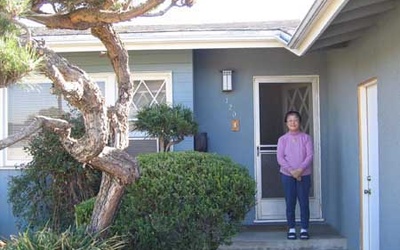
Records of a Japanese woman married to a Kibei-Nisei: Masako Kato of Montebello, California - Part 3 Peaceful retirement life, and our grandson continuing on the restaurant path
12 de febrero de 2009 • Keiko Fukuda
Read Part 2 >>After the war, Masako had left Japan to marry Kato Mitsuo, successor to the once prominent Daruma Café in Little Tokyo. However, just five years after her arrival in the US and despite the couple’s heavy investment into renovating the restaurant, they were run out of business by the property owner who designated the restaurant building for demolition for a city-wide redevelopment. Thereafter, they opened a Japanese restaurant near their residence in Montebello for two years until …
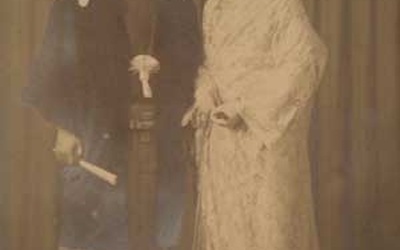
Records of a Japanese woman married to a Kibei-Nisei: Masako Kato of Montebello, California - Part 2 The switch from a wonderfully surreal new life to a path of bitter struggle
23 de enero de 2009 • Keiko Fukuda
Read Part 1 >>A week after their meeting at Aiko Yamano’s home, Masako and Mitsuo Kato had their wedding. From their wedding album, one can tell how extremely luxurious of a wedding it must have been at the time. Masako was outfitted in an edgy design made of lace, and her katsura (traditional headpiece) was a new-age creation made of netting, as opposed to the heavy, traditional pieces. On top of that, even the makeup for the bride was provided …

Discover Nikkei Updates


Mira los nuevos y emocionantes cambios de Descubra a los Nikkei. ¡Entérate qué es lo nuevo y qué es lo que se viene pronto!

